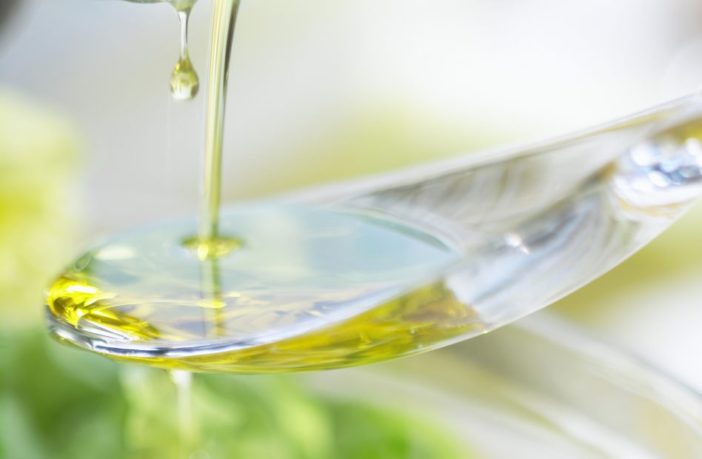Anba News Agency
Isaura Daniel
isaura.daniel@anba.com.br
Imports of the product went up year-to-date through November. Consumers are becoming more exacting and some supermarkets are offering Arab brands.
São Paulo – The olive oil market in Brazil is expanding, and Arab brands are already available from some retailers. The industry relies almost entirely on imported product, and imports were up 12.5% year-to-date through November 2019, as per Foreign Trade Secretariat (SECEX) figures. Imports amounted to 82,400 tonnes.
Numbers from the International Olive Council (IOC) also portray a hike in imports to Brazil. The IOC works with the global olive crop season – which is October to July. Through July 2019, olive oil or olive pomace to Brazil was up 13% from a year ago. Imports were in the 5,300 tonne to 8,800 tonne range, and increased year-over-year in eight of nine months.
Press Release
Bassi amid olive trees: quality leads to sales
“This is a growing industry. More people and households are consuming it, and there’s lots more to come here in Brazil,” Brazilian Olive Oil Producers, Importers and Traders Association (Oliva) president Rita Bassi told ANBA. She said she believes anti-fraud work and the availability of information on the health benefits of olive oil have propelled the market forward.
Bassi believes that inspections and oversight have led to increased availability of quality olive oils. She said a major inspection drive happened in 2018 and 2019. “The impact used to be very bad, both for people who’d get sold something else instead of olive oil, and for serious businesses, who’d be up against unfair competition,” says Bassi. Oliva supported the Brazilian Ministry of Agriculture, Livestock and Supply with inspection efforts.
Casa Santa Luzia, a high-end supermarket in São Paulo, saw olive oil sales go up. Juliano Henrique Soares, who’s in charge of procurement, said sales were up 9% year-to-date through November, with the biggest hike coming in flavored olive oils at 39%, followed by extra-virgin at 8%. Sales of regular olive oil for cooking and frying were down 8%.
Casa Santa Luzia shop supervisor and olive oil specialist Rogério Gomes da Costa sees lower-income buyers beginning to turn to olive oil and longtime buyers better informed and looking for quality. “Sales of the kind of olive oil people use for cooking the most, which is not the extra-virgin kind, are going down, because people are going with extra-virgin even for cooking,” he says.
Costa argues that the claim that extra-virgin olive oil turns to saturated fats when fried is controversial. “It’s a bit of a myth. Extra-virgin oil can withstand the same amount of heat as refined oil, and by using extra-virgin you get the added olive oil flavor in your food,” he adds. According to him, top-tier oils are selling well right now, but sales increase the most for middle-of-the-road product.
Press Release
Santa Luzia carries 222 olive oil brands
Casa Santa Luzia carries 222 olive oil brands – 94 from Italy, 54 from Portugal, 28 from Spain, 21 from Brazil, 11 from Chile, 7 from Greece, 3 from Uruguay, 2 from Morocco, 1 from Argentina and 1 from Lebanon. According to Soares, sales are booming for Portuguese and Italian product, while Spanish is on the way down. Shoppers also ask around the shop for new and award-winning brands.
Arab brands on offer from Casa Santa Luzia are Olis and Volubilis, from Morocco, and Kasslik, from Lebanon. The latter one has been available for over five years; the Moroccan ones became available this year. According to Costa, there aren’t many quality Arab brands on the market in Brazil. He sampled many great Arab products at a tasting event in São Paulo but he can’t find them in Brazil. Casa Santa Luzia buys its Arab brands off an importer/distributor.
Costa feels Arab brands need to do more work in Brazil. “Since they don’t do much tasting or such, the product kind of just gathers dust on the shelves.” Casa Santa Luzia shoppers will buy these different brands, including the Arab ones, mostly out of curiosity. “The bigger brands are the sure buy,” he says.
Although imports of olive oil from Arab countries to Brazil pales in comparison with overall figures, they are climbing: January to November 2019 saw 1,330 tonnes imported, up 45% year-on-year as per SECEX numbers. Tunisia supplied the vast majority at 1,300 tonnes, with 21 tonnes coming from Morocco and 10 tonnes coming from Lebanon. Sales from Tunisia and Morocco went up; sales from Lebanon went down.
Portugal is by far the leading supplier of olive oil from Brazil, followed by Spain, Chile, Argentina and Italy. Tunisia is sixth on the list. According to Rita Bassi, even though Tunisian olive oil is still hard to come by, the country is working hard on output and quality, and more product is coming into Brazil. “There are lots of opportunities in Brazil for quality product. It’s a vast territory and a massive population. Quality product will always find its place,”says Bassi.
Press Release
Tunisia is an olive/olive oil producing country
Arab Brazilian Chamber of Commerce secretary-general Tamer Mansour trusts the outlook for Arab olive oils in Brazil. He points out that sales were much smaller just a few years back. Apart from Tunisia, he names Syria, Lebanon, Egypt and Morocco as potential suppliers to Brazil. “The Arab Chamber wishes to help Arab companies with marketing and product promotion,” he said.
The Chamber brings Arab food companies each year to São Paulo industry shows Anufood (in March) and Apas Show (in May) and will do so again next year. “It’s an opportunity for olive oil companies to get exposure and carve out a spot in the market,” says Mansour. The Arab Chamber is also considering a specific action involving Arab olive oils. It has hosted product sampling events in Brazil in the past.
Despite the hike in imported volume through November 2019, revenue was down 9% – a sign that lower-priced product was imported this year, since the US dollar went up during this timeframe. Olive oil imports came out to USD 369.5 million through Nov. 2019, down from USD 404.5 million through Nov. 2018 (SECEX figures).
Translated by Gabriel Pomerancblum










